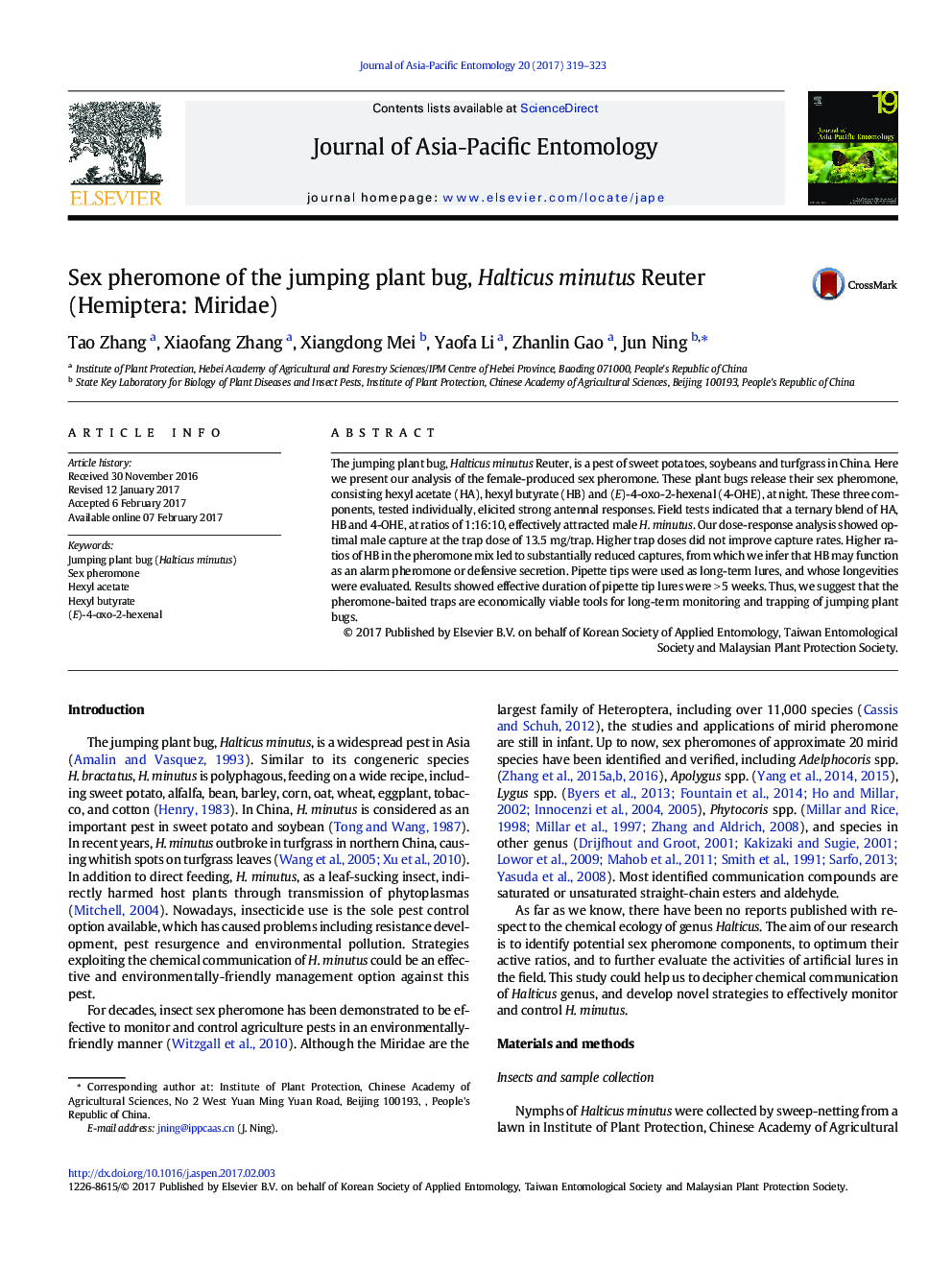| Article ID | Journal | Published Year | Pages | File Type |
|---|---|---|---|---|
| 5763552 | Journal of Asia-Pacific Entomology | 2017 | 5 Pages |
Abstract
The jumping plant bug, Halticus minutus Reuter, is a pest of sweet potatoes, soybeans and turfgrass in China. Here we present our analysis of the female-produced sex pheromone. These plant bugs release their sex pheromone, consisting hexyl acetate (HA), hexyl butyrate (HB) and (E)-4-oxo-2-hexenal (4-OHE), at night. These three components, tested individually, elicited strong antennal responses. Field tests indicated that a ternary blend of HA, HB and 4-OHE, at ratios of 1:16:10, effectively attracted male H. minutus. Our dose-response analysis showed optimal male capture at the trap dose of 13.5Â mg/trap. Higher trap doses did not improve capture rates. Higher ratios of HB in the pheromone mix led to substantially reduced captures, from which we infer that HB may function as an alarm pheromone or defensive secretion. Pipette tips were used as long-term lures, and whose longevities were evaluated. Results showed effective duration of pipette tip lures were >Â 5Â weeks. Thus, we suggest that the pheromone-baited traps are economically viable tools for long-term monitoring and trapping of jumping plant bugs.
Keywords
Related Topics
Life Sciences
Agricultural and Biological Sciences
Animal Science and Zoology
Authors
Tao Zhang, Xiaofang Zhang, Xiangdong Mei, Yaofa Li, Zhanlin Gao, Jun Ning,
